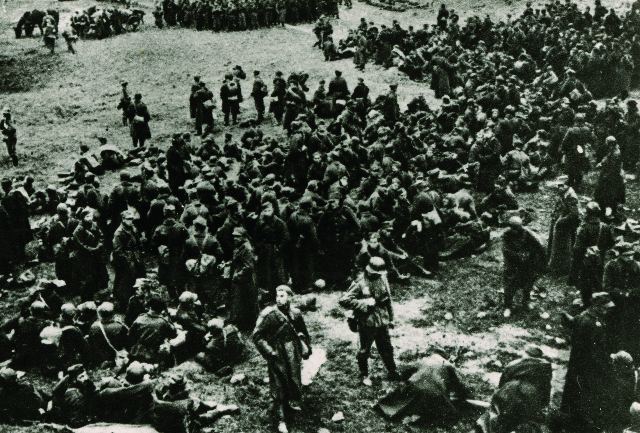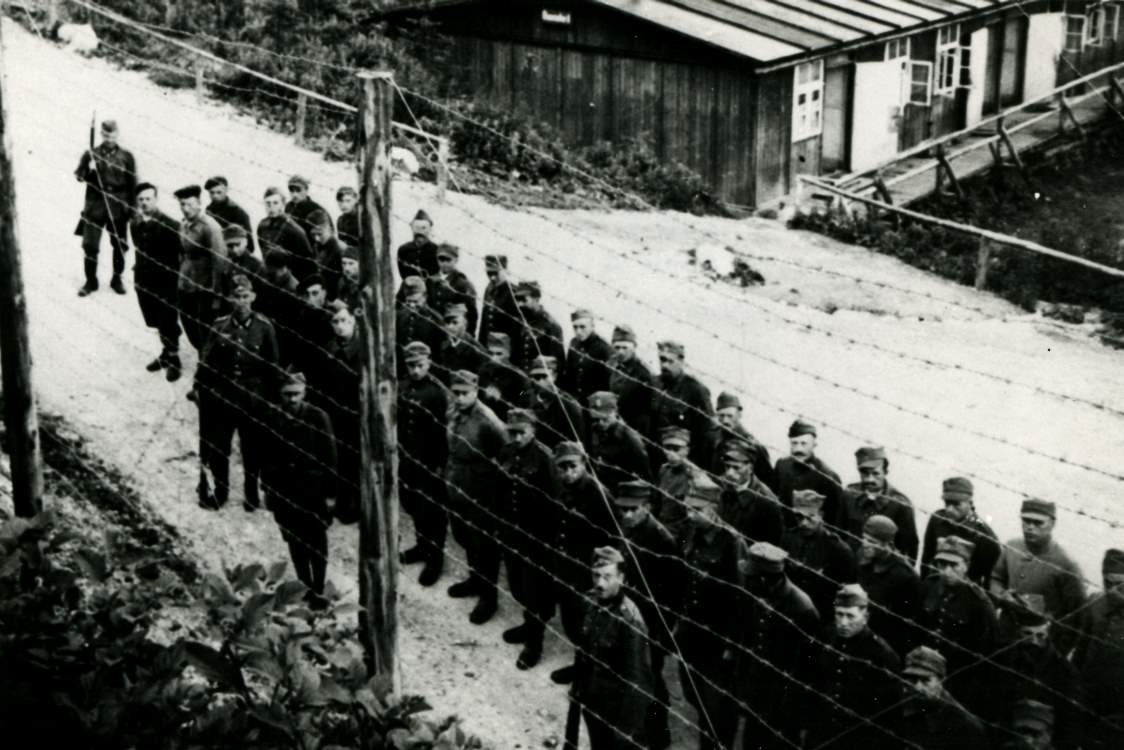Around 66,000 Polish soldiers were killed in the fighting in September 1939 whilst 134,000 were wounded and 420,000 were captured.

In October and November 1939, ethnic German, Ukrainian and Belarussian POWs were liberated. In the winter of 1940 thousands of Jews who had fought in the campaign were also freed, although in this case they were freed to be placed in ghettos to be later murdered.

POWs were separated into officers and other ranks. They were brought together in collection points and sent to transit camps called Dulags. They were often specially adapted barracks, country houses or factories. Once Poland surrendered, POWs were taken to POW camps in the Third Reich. They fell under military command. Officers were placed in Oflags, other ranks in Stalags throughout the twenty one military regions in Germany.

There were very difficult conditions in the Stalags. In the first winter, POWs slept in tents, garages, stables etc. It was not much easier for those who were kept in barracks which were generally unheated, overcrowded and had no electric light or running water. The lack of hygiene and shortage of clothing led to infestations of lice and brought about various diseases. Rations were at starvation level. The Wehrmacht deliberately physically wore down the POWs. The injured and ill did not receive medical attention and were treated with indifference.

As early as September 1939 POWs were employed, especially in agriculture and later in armaments manufacture although this is specifically forbidden under the terms of the Geneva Convention. They also had to build their own barracks in the POW camps.
Around 3,500 NCOs were taken prisoner. They were treated the same as private soldiers in the construction of airports, armaments manufacture, road building, mines and quarries. They were not paid. Some were sent to penal POW camps where conditions were particularly harsh such as Oberlangen, Fulen, Vullen, Wesuwe and Bathorn which were in marshland which in turn had consequences for the health of the POWs. In June 1940 around 300 NCOs were handed over to the Gestapo.
In the spring of 1940 when the labour shortage in Germany was beginning to be felt, Hitler ordered that Polish private soldiers and NCOs were to be released and their status was to be changed to that of civilian workers in order for them to become forced labourers.

In this way, around 140000 forced labourers were recruited, initially by promises and later, for those that were not persuaded, by beatings. The POWs thus lost their rights as POWs in defiance of the Geneva Convention and the protection of the International Red Cross. They now came under the jurisdiction of the Gestapo and could be arrested and sent to a concentration camp at any time. Once they left the POW camp, they had to report to the employment office immediately to receive their assignments. They were now under the discriminatory laws of Himmler.
Prisoners who refused to give up their POW status could be blackmailed with threats against their family or they could be beaten. These POWs could be handed over to the Gestapo or police where they were tortured and then placed in a penal company, penal camp, prison or even concentration camp.
The process of changing the status of POWs which began in 1940 continued throughout the war as Poles were captured in various campaigns in both the west and east. In September 1944 there were around 53000 POWs from Poland.
After the end of the Warsaw Uprising, 18000 POWs were captured including 2800 officers, 553 young people aged from eight to eighteen and 2700 women. The Geneva Convention made no allowances for women and children in POW camps. The situation became even more complicated as some of the women were pregnant.
It was only after the Warsaw Uprising that women and children were granted POW status for the first time. The Germans agreed to treat them as per the Geneva Convention. However this meant that both women and children were treated in the same way as adult men. In the transit camps at Ożarów and Pruszków just outside Warsaw attempts were made to persuade them to give up their POW status. This continued to the permanent POW camps. In general these proposals were refused even when they were sent to weapons factories in Chemnitz and Goslar. They were employed in the same way as forced labourers. Those women who refused this type of work were sent to the penal POW camps in Oberlangen and Molsdorf. Here they were treated with conditions that resembled penal camps with long roll calls, poor living and sanitary conditions as well as hunger rations. Both of these camps were located near swamps which further effected the health of the inmates. Children were separated into two groups. One worked in the weapons factory in Chemnitz, the other in the weapons factory in Brokwitz.
Most POWs from the Warsaw Uprising worked in military industries. This was not only hard work but also dangerous. This factories were under constant aerial attack and so many POWs were killed.


Relations